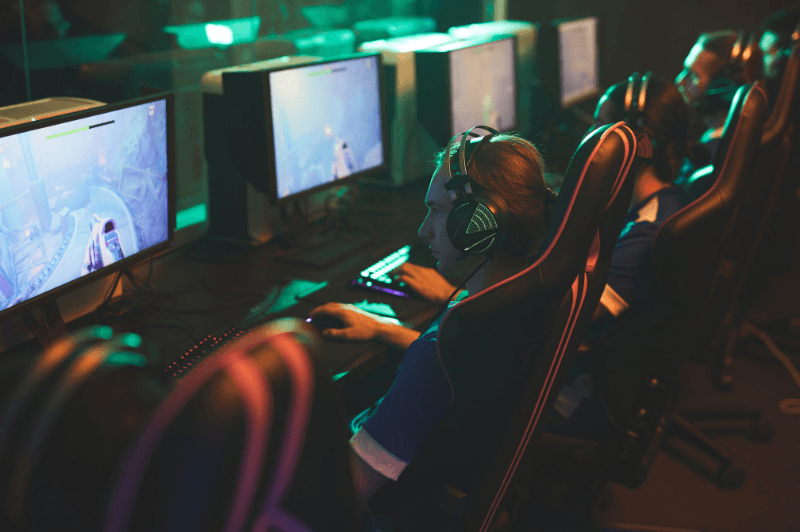How to Fix Input Lag and Enhance Your Gaming Experience
Nothing is more frustrating than pressing a button and feeling a slight delay before the action happens on screen. Whether you’re lining up the perfect headshot, dodging an incoming attack, or making frame-perfect inputs, input lag can ruin your reaction time and hold you back from playing at your best.
Input lag can come from multiple sources, including your monitor, controller, keyboard, mouse, system performance, and even your network connection. The good news? With the right optimizations, you can fix input lag significantly and achieve near-instant responsiveness—giving you a real competitive edge.
At inputdelay.com, we’ve tested and compiled the most effective ways to minimize and fix input lag across all platforms.
Differences Between Casual and Competitive Gaming
Casual Gaming:
In single-player or slower-paced games, input lag is generally less noticeable. A delay of 40–60 ms does not significantly impact gameplay, allowing for a smoother and immersive experience where visual quality often takes priority.
Competitive Gaming:
In fast-paced online multiplayer games such as first-person shooters (Call of Duty, Fortnite), racing games, or MOBAs (League of Legends), even a few milliseconds of delay can be the difference between victory and defeat. High input lag disrupts reaction times, making it harder to respond to fast movements and putting players at a competitive disadvantage.
Tip: Serious about competitive gaming? Elevate your setup and fix input lag with our top-rated choice on Amazon* (Affiliate Link)!

| Aspect | Casual Gaming | Competitive Gaming |
|---|---|---|
| Response Time | A delay of 40–60 ms is usually unnoticeable. | Any delay over 20 ms can cause a disadvantage. |
| Input Lag | Acceptable up to 40 ms. | Essential to keep below 10 ms. |
| Graphics Quality | Prioritizes high visual fidelity. | Prioritizes smooth performance over visuals. |
| Frame Rate (FPS) | 30–60 FPS is sufficient. | 120 FPS or higher is recommended. |
| Background Processes | Motion smoothing and effects are acceptable. | Additional processing that increases lag is avoided. |
| Reaction Speed | Low to moderate importance. | Quick reactions and precise control are critical. |
Response Time
Casual Gaming: A delay of 40–60 ms is usually unnoticeable.
Competitive Gaming:Any delay over 20 ms can cause a disadvantage.Input Lag
Casual Gaming: Acceptable up to 40 ms.
Competitive Gaming: Essential to keep below 10 msGraphics Quality
Casual Gaming: Prioritizes high visual fidelity.
Competitive Gaming: Prioritizes smooth performance over visuals.Frame Rate (FPS)
Casual Gaming: 30–60 FPS is sufficient.
Competitive Gaming: 120 FPS or higher is recommended.Background Processes
Casual Gaming: Motion smoothing and effects are acceptable.
Competitive Gaming: Additional processing that increases lag is avoided.Reaction Speed
Casual Gaming: Low to moderate importance.
Competitive Gaming: Quick reactions and precise control are critical.How to Fix Input Lag: Impact on Accuracy and Reaction Time
High input lag makes it harder to perform quick on-screen movements in real-time. This is particularly noticeable in:
- Aiming Precision: In FPS games or any title that requires precise control, input latency can cause sluggish aiming and inaccurate movements. This leads to missed shots and slower response times, reducing overall performance.
- Timing & Synchronization: In rhythm games or situations that require fast button combinations, even minor delays can throw off timing and disrupt gameplay fluidity. Competitive gamers require instant feedback from their inputs to maintain accuracy.
Input Lag How to Fix: The Impact on Streaming & Viewer Experience
Input lag isn’t just a problem for gamers—it also impacts viewers. In eSports events and livestreams, audiences expect smooth, responsive gameplay. High latency can:
✅ Make in-game actions look inaccurate
✅ Cause delayed player reactions
✅ Negatively impact the overall viewing experience
That’s why professional eSports tournaments prioritize ultra-low latency to ensure top-tier performance for both players and spectators.
Conclusion: How to Fix Input Lag – Reduce Delay for Smoother Gaming Performance
Understanding input delay and its effects is essential for both casual and competitive gamers. While casual players can tolerate some delay, competitive gamers must minimize latency for peak performance. Optimizing settings and using the right hardware can significantly enhance responsiveness, leading to a smoother and more immersive gaming experience.
If you’re looking for the best ways to minimize delay and improve reaction times, this guide will walk you through step-by-step solutions to achieve the smoothest, most responsive gaming experience possible. Visit our page on Fix Input Lag.
